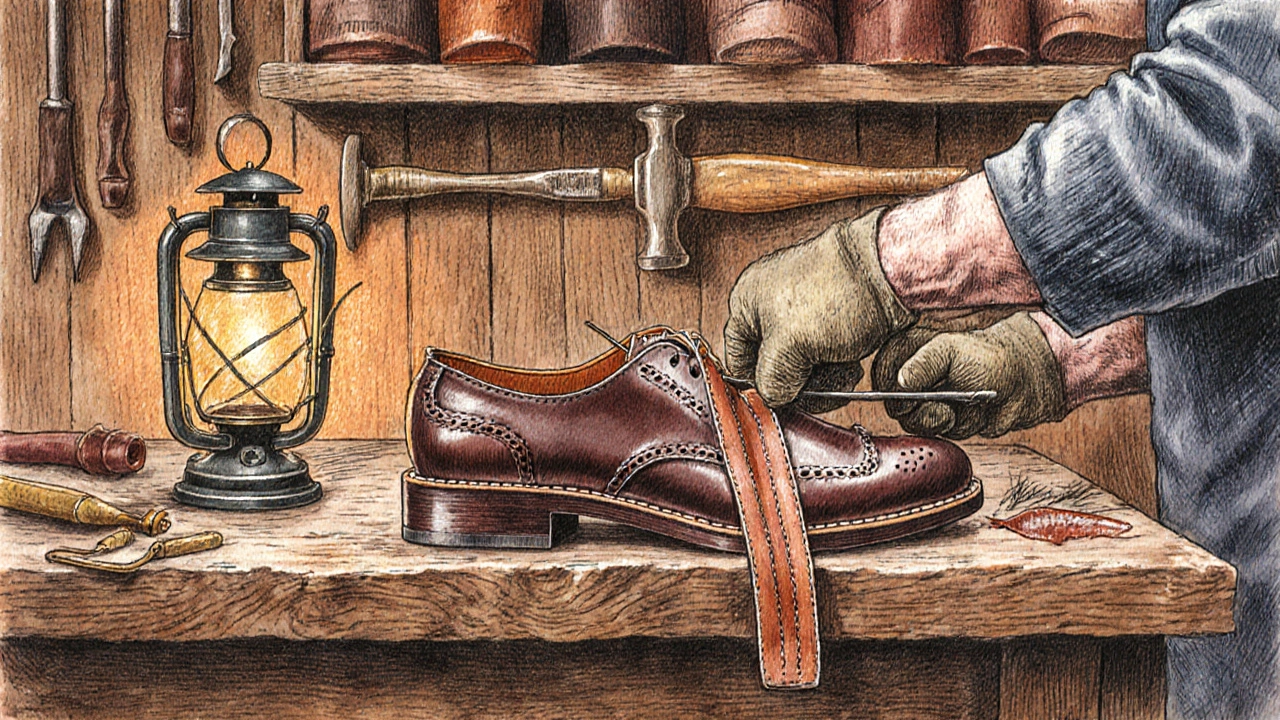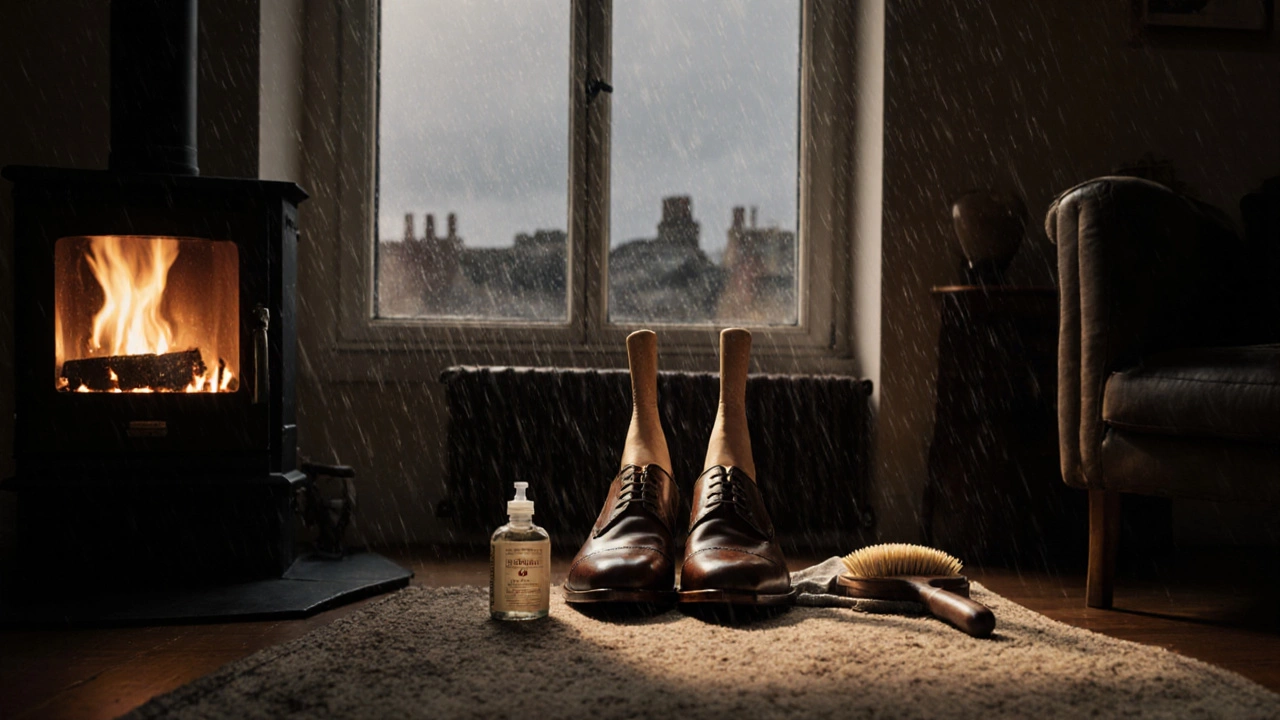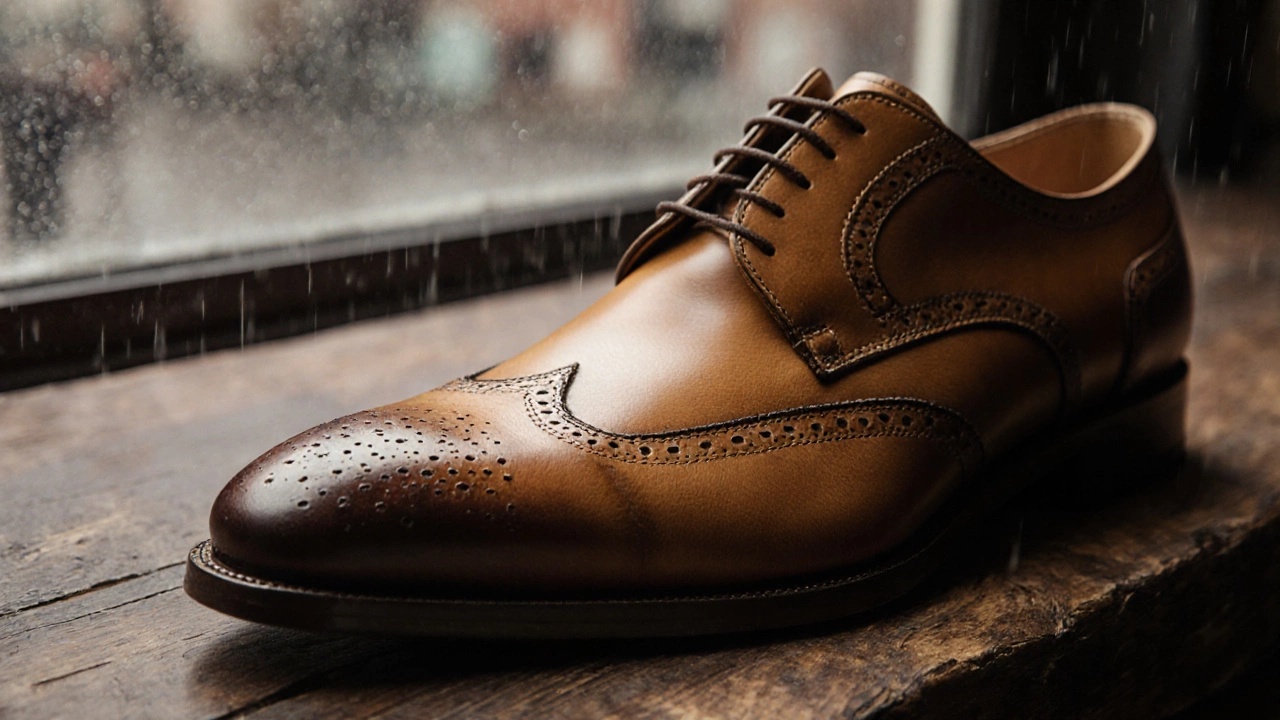Leather Shoe Quality Checker
Check if your leather shoes meet Irish standards for quality. Select the features of your shoes to see if they're high-quality.
Quick Takeaways
- Full‑grain leather is the gold standard; it ages beautifully.
- Goodyear welted construction means the shoe can be resoled.
- Check stitching: straight, tight and preferably hand‑stitched.
- Buy from reputable Irish retailers or trusted local cobblers.
- Regular care-cleaning, conditioning and proper storage-preserves quality.
Ever wondered why some leather shoes look better after a few weeks of rain in Dublin while others crack at the first wet day? Knowing how to judge high quality leather shoes can save you money and keep you looking sharp on Grafton Street or the cliffs of Moher. Below is a step‑by‑step guide built around the Irish market, local traditions and the practical realities of our weather.
Understanding Leather Types
Not all leather is created equal. The first thing to learn is the difference between the most common grades you’ll see in shoe stores across Ireland.
Full‑grain leather is a type of leather that retains the entire grain layer of the hide, including natural markings and imperfections. It’s the toughest, most breathable and develops a unique patina with use. Expect a price range of €150-€500 for a pair of dress shoes.
Top‑grain leather has the outermost grain sanded off, resulting in a smoother surface. It’s still durable but less resistant to scratches than full‑grain. Irish shoppers often see it on mid‑range brands at €100-€250.
Calfskin leather comes from younger cattle, giving a finer grain and softer feel. It’s a favorite for formal shoes because it molds quickly to the foot. Prices typically sit between €180 and €400.

Construction Details That Matter
Even the best leather can be ruined by shoddy construction. Focus on these three hallmarks of quality craftsmanship.
Goodyear welt is a stitching method that attaches the upper, insole and outsole together with a separate strip of leather. This creates a sturdy, water‑resistant seal and, crucially, lets you replace the sole without damaging the upper-a major plus when Irish weather repeatedly soaks your shoes.
Hand stitching refers to stitching done manually rather than by machine, resulting in tighter, more flexible seams. Look for even, unbroken stitches along the welt and around the tongue. If you see loose threads, the shoe is likely to fall apart sooner.
Leather sole is a sole crafted from a single piece of leather, providing excellent grip on cobblestones and a classic look. While leather soles can be slippery on wet pavement, many high‑end Irish shoes pair them with a rubber heel “spear” for extra traction.
Practical Inspection Checklist
When you’re standing in a shop on Henry Street or browsing an online Irish retailer, run through this quick list.
- Look: The leather should have a consistent colour and grain. Full‑grain will show natural marks; top‑grain appears uniform.
- Feel: High‑quality leather feels buttery yet firm. Press your thumb into the grain; it should bounce back.
- Smell: Genuine leather has a warm, slightly sweet scent. A chemical or plastic odor signals synthetic material.
- Flex: Gently bend the toe. The leather should bend smoothly without cracking.
- Stitching: Examine the welt and any seam stitches under good light. Look for tight, even stitches without gaps.
- Sole attachment: Lift the heel slightly; a Goodyear‑welted shoe will stay firmly attached.
- Brand and warranty: Reputable Irish retailers like Brown Thomas or local cobblers such as Patrick’s Shoes a family‑run shop in Dublin known for handcrafted leather footwear. often provide a 2‑year repair guarantee.
Irish Shopping Tips
Our climate is famously wet, so choose shoes that can handle a few extra puddles.
- Buy from stores that let you try on shoes after a day of walking. Many Dublin shoe boutiques offer a 30‑day return policy so the leather can settle.
- Look for waterproofing treatments. A light spray of leather protector from Irish brands like “Irish Hide” adds a barrier against rain.
- Consider local craftsmen. In Cork, the workshop “Cork Leather Co.” still produces Goodyear‑welted shoes by hand.
- Check the resale value. High‑quality shoes from established Irish makers retain value, making them a smart long‑term investment.

Maintaining High‑Quality Leather Shoes
Even the best pair will deteriorate without care, especially when faced with Irish rain and cold.
- Clean weekly. Use a soft brush to remove dust, then wipe with a damp cloth. \n
- Condition monthly. Apply a thin layer of leather conditioner to keep the hide supple.
- Polish for shine. A neutral polish works for most colours; brown shoes benefit from a matching hue.
- Store properly. Use shoe trees made of cedar to absorb moisture and keep shape.
- Rotate pairs. Give each pair at least 24 hours between wears to let the leather breathe.
Comparison of Common Leather Types
| Type | Durability | Breathability | Typical Price (€/pair) | Best For |
|---|---|---|---|---|
| Full‑grain | High | Excellent | 150-500 | Everyday wear, Irish weather |
| Top‑grain | Medium‑high | Good | 100-250 | Business casual |
| Calfskin | Medium | Very good | 180-400 | Formal occasions |
Frequently Asked Questions
How can I tell if a shoe is truly made of leather?
Genuine leather feels warm, has a natural grain, and smells slightly sweet. Synthetic leather often feels colder, feels plasticky and may have a strong chemical odor.
What is the difference between Goodyear welt and cemented construction?
Goodyear welt uses a stitched leather strip to join the upper and sole, allowing resoling. Cemented shoes are glued, which is cheaper but makes repairs difficult.
Can I wear leather shoes in heavy rain?
Yes, if the shoes have a waterproofing treatment and a Goodyear welt. Dry them gently after exposure; avoid direct heat.
Where in Ireland can I have my shoes resoled?
Reputable cobblers like Patrick’s Shoes in Dublin’s south side, offers expert resoling services for Goodyear‑welted shoes. Also check out Cork Leather Co. in Cork city.
How often should I condition my leather shoes?
Aim for once a month in dry weather, and after any heavy rain exposure. Over‑conditioning can darken the leather, so use sparingly.
